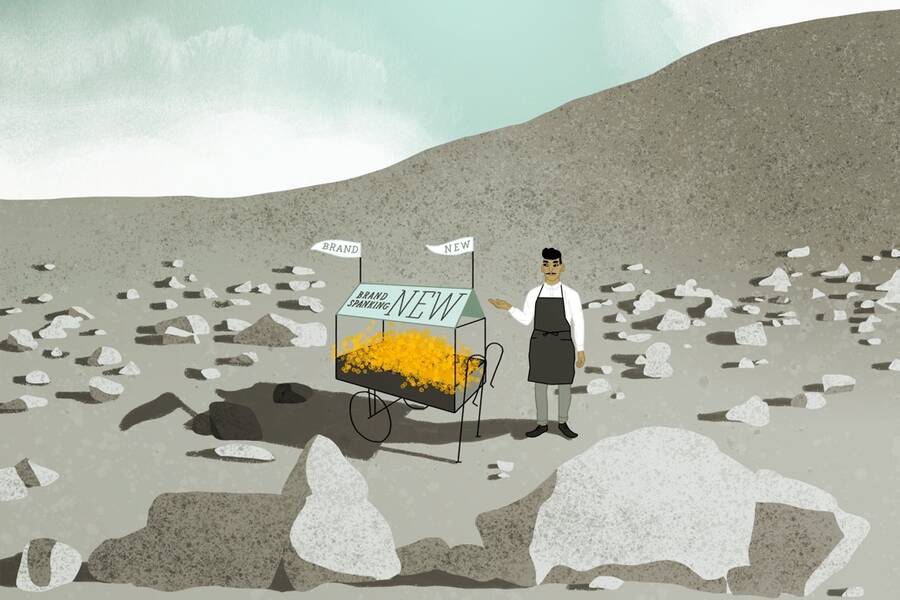Leadership Apr 10, 2017
Why Warmth Is the Underappreciated Skill Leaders Need
The case for demonstrating more than just competence.
This audio is powered by Spokn.

Michael Meier
When it comes to success in leadership, there has never been just one playbook. Some leaders are extroverts, natural mentors, and charismatic speakers; others prefer to lead by example and take a more hands-off approach.
There is, however, one simple fact that leaders ignore at their peril: those who demonstrate high levels of “interpersonal warmth” have a better chance at long-term success.
“Warmth is the differentiating factor,” says Loran Nordgren, an associate professor of management and organizations at the Kellogg School. He cites a Zenger Folkman study that looked at 50,000 managers and found that a leader’s overall effectiveness is predicted more by warmth than competence. “If you’re seen as low-warmth, you have something like a 1-in-2000 chance to make the top quartile of effectiveness as a leader.”
The lesson for aspiring business leaders is not to smile more broadly. Instead, Nordgren recommends simply being aware of one’s perceived warmth and taking steps to manage that perception whenever possible.
Just as it pays to consciously demonstrate one’s own competence—by accepting challenging projects, say, or solving an issue without being asked—it helps to be more proactive, even strategic, about expressing warmth.
“There isn’t a single way to do this, but we know from social psychology that conveying warmth can be powerfully effective for just about any leader.”
Take a Page from Lisa Simpson’s Book
According to social psychologists who study how we perceive other people, our impressions of others essentially hinge on two characteristics. The first is competence: How capable, successful, and intelligent do we consider a person to be? The second is interpersonal warmth: How likeable or trustworthy does a person seem?
“A good leader will learn to convey high competence and high warmth,” Nordgren says. “You always need both.” (For more on the academic origins of this line of research see here.)
“Any athlete who is just barely making the team has to be a good clubhouse guy—otherwise he’s got nothing. But there’s no reason why warmth should only be a means of compensating.”
To illustrate how warmth and competence matter in everyday life, Nordgren points to the cast of The Simpsons. Moe, the sleazy, inept bartender, would fall squarely within the low-competence, low-warmth quadrant. Mr. Burns, the oligarch, is high competence, low warmth. Homer, who is basically a well-intentioned guy with an impulse-control problem, might be categorized as low competence, high warmth. The exemplar of good leadership in The Simpsons would be Lisa. “She’s accomplished and intelligent, but also other-focused and empathetic, and she conscientiously advances both sets of characteristics.”
Of course, on The Simpsons or in real life, “high warmth” is ultimately a matter of perception. “Leadership presence refers to how people perceive you,” Nordgren says. So the onus is on you to shift the dynamic in your favor.
Get Over Your Discomfort
To some, the concept of actively managing warmth might rouse their inner skeptic. Who wants to be that hapless colleague who tries just a little too hard to ingratiate himself to others?
“It’s true that incompetent people sometimes try to compensate by being extremely warm,” Nordgren says. “Any athlete who is just barely making the team has to be a good clubhouse guy—otherwise he’s got nothing. But there’s no reason why warmth should only be a means of compensating.”
Others are put off by what they see as endless networking. “People are not accustomed to thinking about social interaction through a strategic lens,” Nordgren says. “They worry about being manipulative or inauthentic—or both. But when you’re thinking about how to build relationships around warmth, you want to make sure that those actions are genuine.”
For Nordgren, cultivating warmth is about being purposeful, setting aside the time, and thinking carefully about how to build relationships with people, rather than simply trusting that your natural warmth will win them over.
“The way to get comfortable with building relationships strategically is to think of it as an obligation rather than self-promotion,” Nordgren says. “If you see your role as one that requires building positive relationships, then this is something that makes sense to devote your energy to.”
Choose Your Moments Thoughtfully
Given how crucial a reputation for warmth can be for one’s career, what should leaders keep in mind as they cultivate warmth?
Nordgren cautions against expressing warmth only occasionally or haphazardly. Choose the wrong moment, he says, and you may do more harm than good for your reputation.
“Often we sacrifice one dimension for the sake of the other,” Nordgren says. For example, highlighting your achievements may help to establish your competence, but it may not do much to improve your warmth. On the other hand, certain “warm” gestures—such as offering to take notes in a meeting—can sometimes convey submissiveness or passivity, which may not be ideal.
“You want to perform nice gestures,” Nordgren says, “but you don’t want to put yourself at a disadvantage.”
Other moments offer better opportunities. Choosing to lead at a difficult moment, taking risks to help people out when they are in trouble—these kinds of actions build reciprocity and help to convey warmth.
It is also important to remember that warmth is highly context dependent.
“It means different things across different organizations and cultures,” Nordgren says. “So part of the challenge is understanding how to convey it respectfully wherever you go.”



